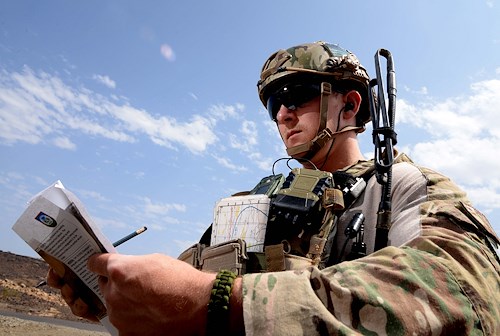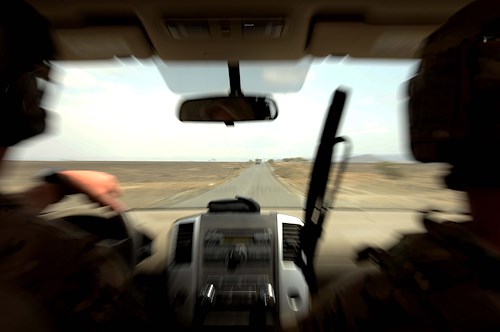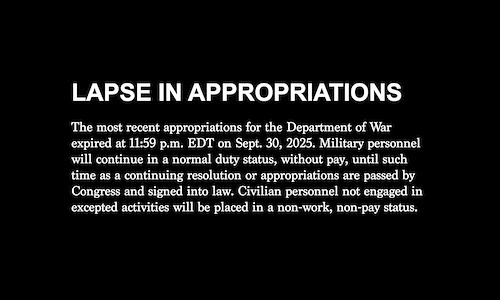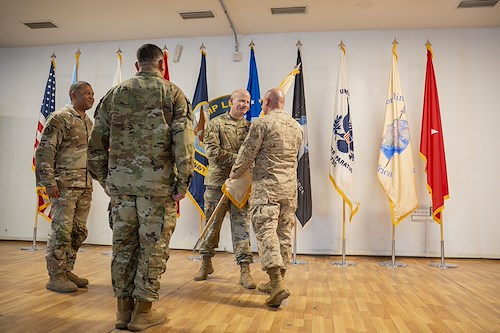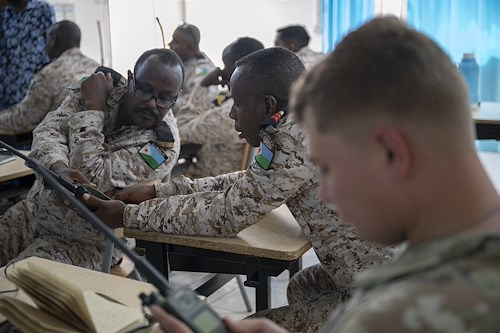Gallery contains 9 images
×
Photo 1 of 9
Combined Joint Task Force - Horn of Africa Image
U.S. Air Force Master Sgt. Anthony Nickell, Tactical Air Control Party NCO in charge, plans his radio calls for a simulated personnel recovery during a tactical exercise with the French Air Force Feb. 24, 2016, in Djibouti. The TACPs organized the joint training in hopes of familiarizing the team and French aviators with each other’s tactics, techniques and procedures, and sharpening the skillsets of everyone involved. (U.S. Air Force photo by Staff Sgt. Kate Thornton)
Photo by: Staff Sgt. Kate Thornton
Photo 2 of 9
Combined Joint Task Force - Horn of Africa Image
U.S. Air Force Master Sgt. Anthony Nickell, Tactical Air Control Party NCO in charge, and U.S. Air Force Staff Sgt. Corey Johnson, TACP member, lead a convoy as quickly and safely as possible during a tactical exercise with the French Air Force Feb. 24, 2016, in Djibouti. With a giant orange marker atop the vehicle, the two TACPs led the convoy under the close watch and escort of a French Air Force Mirage 2000 fighter jet. (U.S. Air Force photo by Staff Sgt. Kate Thornton)
Photo by: Staff Sgt. Kate Thornton
Photo 3 of 9
Combined Joint Task Force - Horn of Africa Image
U.S. Air Force Master Sgt. Anthony Nickell, Tactical Air Control Party NCO in charge, awaits a landing French Army Puma helicopter during a tactical exercise Feb. 24, 2016, in Djibouti. Upon arrival to the landing zone, the Puma helicopter appeared with its Mirage escort – all coordinated, controlled and integrated by the TACPs. (U.S. Air Force photo by Staff Sgt. Kate Thornton)
Photo by: Staff Sgt. Kate Thornton
Photo 4 of 9
Combined Joint Task Force - Horn of Africa Image
U.S. Air Force Staff Sgt. Corey Johnson, Tactical Air Control Party member, approaches his position overlooking a city during a tactical exercise with the French Air Force Feb. 24, 2016, in Djibouti. There were two French Air Force Mirage 2000 fighter jets for each TACP location and one extra within the area, making contact with a refueling aircraft when necessary. Their main mission was to conduct simulated air strikes, all controlled by the TACPs. (U.S. Air Force photo by Staff Sgt. Kate Thornton)
Photo by: Staff Sgt. Kate Thornton
Photo 5 of 9
Combined Joint Task Force - Horn of Africa Image
U.S. Air Force Tactical Air Control Party Airmen and U.S. Army Soldiers participate in a tactical exercise with the French Air Force Feb. 24, 2016, in Djibouti. The TACPs organized the joint training in hopes of familiarizing the team and French aviators with each other’s tactics, techniques and procedures, and sharpening the skillsets of everyone involved. (U.S. Air Force photo by Staff Sgt. Kate Thornton)
Photo by: Staff Sgt. Kate Thornton
Photo 6 of 9
Combined Joint Task Force - Horn of Africa Image
U.S. Air Force Staff Sgt. Corey Johnson, Tactical Air Control Party member, adjusts his satellite communications during a tactical exercise with the French Air Force Feb. 24, 2016, in Djibouti. Although aviators across the globe speak English, accents and distinctions from both the English-speaking or French-speaking personnel can create challenges under already stressful situations, and the exercise helped both forces become more familiar with each other’s accents. (U.S. Air Force photo by Staff Sgt. Kate Thornton)
Photo by: Staff Sgt. Kate Thornton
Photo 7 of 9
Combined Joint Task Force - Horn of Africa Image
U.S. Air Force Staff Sgt. Corey Johnson, Tactical Air Control Party member, prepares notes for communicating with French Air Force aviators during a tactical exercise Feb. 24, 2016, in Djibouti. The long day of training paid off as they overcame challenges and took notes that will improve the next exercise and real-world operations. (U.S. Air Force photo by Staff Sgt. Kate Thornton)
Photo by: Staff Sgt. Kate Thornton
Photo 8 of 9
Combined Joint Task Force - Horn of Africa Image
U.S. Air Force Staff Sgt. Corey Johnson, Tactical Air Control Party member, communicates with French Air Force aviators during a tactical exercise Feb. 24, 2016, in Djibouti. Although aviators across the globe speak English, accents and distinctions from both the English-speaking or French-speaking personnel can create challenges under already stressful situations, and the exercise helped both forces become more familiar with each other’s accents. (U.S. Air Force photo by Staff Sgt. Kate Thornton)
Photo by: Staff Sgt. Kate Thornton
Photo 9 of 9
Combined Joint Task Force - Horn of Africa Image
U.S. Air Force Staff Sgt. Corey Johnson, Tactical Air Control Party member, controls close air support during a tactical exercise with the French Air Force Feb. 24, 2016, in Djibouti. The long day of training paid off as they overcame challenges and took notes that will improve the next exercise and real-world operations. (U.S. Air Force photo by Staff Sgt. Kate Thornton)
Photo by: Staff Sgt. Kate Thornton
Two members of the U.S. Air Force Tactical Air Control Party assigned to Combined Joint Task Force-Horn of Africa bridged the gap between U.S. ground and French air assets during a tactical exercise Feb. 24, 2016, in Djibouti.
The TACPs organized the joint training in hopes of familiarizing the team and French aviators with each other’s tactics, techniques and procedures (TTPs), and sharpening the skillsets of everyone involved.
“With our job you don’t know who you’re going to be working with, such as Germans, Italians and here with the French, so it just helps a lot getting to see everyone else’s TTPs, how they work, how we can help improve, and how we can trade back and forth different training techniques,” said U.S. Air Force Staff Sgt. Corey Johnson, TACP.
The full day of training consisted of two separate simulated objectives with numerous moving parts.
The first objective included simulating personnel recovery and transportation to a safe location.
With a large orange marker atop the vehicle, the two TACPs led a convoy as quickly and safely as possible under the close watch and escort of a French Air Force Mirage 2000 fighter jet. Upon arrival to the landing zone, a French Army Puma helicopter appeared with its Mirage escort – all coordinated, controlled and integrated by the TACPs.
“This is our first time for a personnel recovery exercise with the French,” said U.S. Air Force Master Sgt. Anthony Nickell, TACP NCO in charge. “It’s challenging at times because there’s a little bit of a language barrier.”
Although aviators across the globe speak English, accents and distinctions from both the English-speaking or French-speaking personnel can create additional challenges under already stressful situations.
“The French do a lot of training here and (are involved in other conflicts), and a lot of times they’re going to work with (U.S. TACPs).” Nickell said. “With that language barrier, just getting used to hearing the personnel is going to make everyone more effective downrange.”
As the dust settled and the personnel were “rescued,” Nickell thanked the Puma aircrew for their assistance, leading to the second objective: simulated close air support.
A total of six aircraft circled overhead while the two controllers stood approximately 50 miles apart coordinating, controlling and de-conflicting the airspace, but this time with much more involved.
“It’s a big air exercise.” Johnson said. “We’re controlling the airspace while the Mirages are interchanging locations while also being able to support the TACPs on the ground.”
There were two Mirages for each TACP location and one extra within the area, making contact with a refueling aircraft when necessary. Their main mission was to conduct simulated air strikes, all controlled by the TACPs.
“We haven’t had any combat oriented missions (with the French),” Nickell said. “It’s mostly training, which really helps us develop those relationships.”
While controlling upwards of six to nine aircraft and ground troops, just one day of training can be exhausting. Johnson emphasized the importance of the tasks at hand and working toward a common goal with foreign partners.
“If we didn’t do this training and you went out to do this stuff for real, you’re going to be almost blind,” Johnson said. “(The U.S. and French) build a very good relationship with each other, and it’s really good for multinational training.”
The long day of training paid off as they overcame challenges and took notes that will improve the next exercise and real-world operations. The participants agreed the exercise met the objectives, leading to mission success.
“At least this way we can see it in a controlled environment, and if something happens then it’ll be safe,” Johnson said. “It’s better to do it here and get all the kinks out before we actually go to war and do it for real.”

